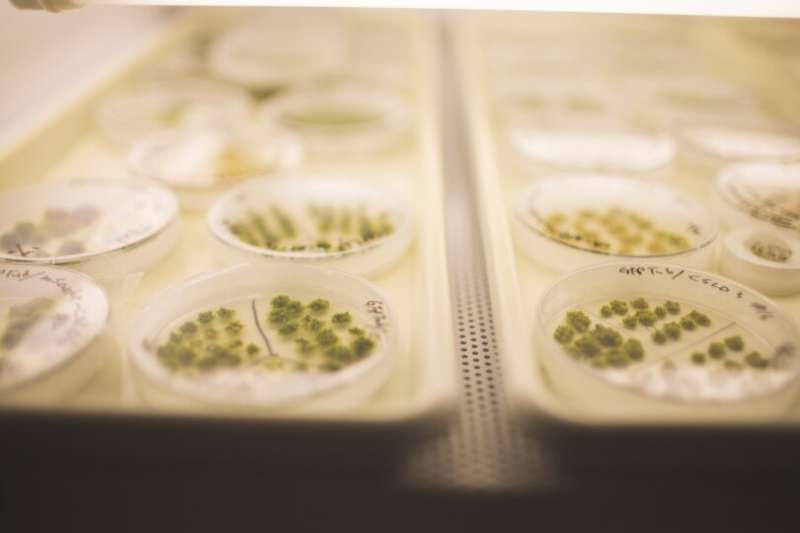This article has been reviewed according to Science X's editorial process and policies. Editors have highlighted the following attributes while ensuring the content's credibility:
fact-checked
peer-reviewed publication
trusted source
proofread
How a mysterious protein plays a crucial role in plant growth

It's springtime on campus, which means that flowers and plants of all kinds are bursting to life, growing and blooming.
But why? What's going on inside a plant to drive this growth? It's a simple question that scientists have long sought to understand. In the Department of Biological Sciences, the Bezanilla Lab has recently published findings in the Journal of Cell Biology that sheds light on this mystery.
In their research, Professor Magdalena Bezanilla and senior research scientist Shu-Zon Wu, along with researchers from the University of Rhode Island, discovered how a somewhat mysterious protein known as cellulose synthase-like D, or CSLD, plays a crucial role in plant growth and is likely a generator of cellulose, which is the main structural component of all plants.
"This research has shed light on the role of these proteins in plant growth," Bezanilla says of the study, which was published in April. "In the spring, these proteins are busily working to help provide new cells for the plant."
Previously, only another protein known as cellulose synthase, or CESA, was believed to contribute to the generation of cellulose, which makes wood strong for homes, binds cotton for clothing, and is a primary component of vegetables. The new finding has potential repercussions for many plant-dependent economic sectors, from biofuel to wood products to agriculture.
"The proteins we've been studying, CSLDs, are essential for plant reproduction, water absorption, and general growth, all of which are targets for agricultural crop improvement," says study co-author Alison Roberts of the University of Rhode Island. "If we can understand the specific roles of CSLDs in these processes, we can use that knowledge to inform efforts to breed crops that are more productive and stress tolerant."
During the four-year study, the researchers used CRISPR genome editing to manipulate a moss plant so that the CSLD proteins were tagged with fluorescent markers, enabling their movement to appear under a microscope. They discovered that these proteins moved relatively quickly to the tips of cells and developing cell plates where the proteins contributed to plant growth.
"You can even see these moss cells with your eye if you look closely," Bezanilla says. The moss cells are similar to roots hairs, which can be observed in any backyard garden as the short and fuzzy strings that grow on plant roots.
"All plants, regardless of the season, have a population of cells that are actively dividing and producing more leaves or producing more branches or producing more root structure," Bezanilla says. "Those cells need to divide, and need to divide in a particular way. This protein is helping to provide structural stability for the new cell plates."
The researchers also discovered that CSLD proteins move independently from and more erratically than CESA proteins, which means the two proteins are possibly making different types of polymers—providing fodder for future studies.
"Now we know that CESAs and CSLDs are more similar than we thought," says Roberts, who will present the study in June at the XVI Cell Wall Meeting in Malaga, Spain. "So we are trying to understand how they are specialized to perform their different tasks. We think differences in the ways that CESAs and CLSDs move can give us some clues."
For Bezanilla, it all contributes to better understanding of how plants grow.
"The main interest in my lab is to understand how individual cells can impart large-scale geometric information to developing organisms," Bezanilla says. "What's fascinating is that leaves are patterned on the length scale of centimeters, and trunks are patterned on the length scale of meters, but it's individual tiny little cells on the length scale of microns that are generating the material that is important for that patterning."
"You have these tiny little units that are ultimately patterning a large organism," Bezanilla adds. "It's magical, right?"
More information: Shu-Zon Wu et al, Cellulose synthase-like D movement in the plasma membrane requires enzymatic activity, Journal of Cell Biology (2023). DOI: 10.1083/jcb.202212117
Journal information: Journal of Cell Biology
Provided by Dartmouth College




















